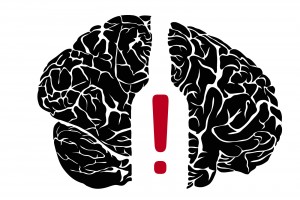Recently Korean researchers showed that a reduction of alcohol intake is associated with less heart attacks and strokes. This was published on March 28, 2024. The researchers followed 21,011 participants who were heavy drinkers. The baseline examination took place 2005-2008 and a follow-up exam was between 2009 and 2012. Definition of heavy drinking was as follows:
- For men: 4 drinks (56 g) per day or more than 14 drinks (196 g) per week.
- For females: more than 3 drinks (42 g) per day or more than 7 drinks (98 g) per week.
Reduced alcohol intake resulted in a 23% reduced risk of heart attacks or strokes, which was a significant finding. Patients benefited most from alcohol reduction regarding angina and ischemic strokes. This study was also reviewed in Medscape:
Other studies showing benefits of less alcohol intake
A 2018 study in Plos Medicine examined a US population of 99,654 adults (68.7% female).
At the time of the enrolment, they were 55–74 years old. The overall time of follow-up was 8.9 years. Scientists looked at the various risks of cancer development or deaths from cardiovascular disease as a function of the amount of average alcoholic drinks consumed. The results were as follows:
- Never drinkers: 1.09-fold risk of cancer or death.
- Infrequent drinkers: 1.08-fold risk of cancer or death.
- Heavy drinkers: 1.10-fold risk of cancer or death.
- Very heavy drinkers: 1.21-fold risk of cancer or death.
Heart attack risk and cancer risk from alcohol consumption are different
In addition, with respect to cardiovascular risk it followed a J-curve. This means that light alcohol use reduced the probability of death from a heart attack or stroke, but with moderate or heavy alcohol use the risk of death increased. In contrast, with respect to cancer there was a linear curve, which means that no dose of alcohol was safe for cancer development. The more alcohol you consumed, the higher the risk of cancer development was. Another study also showed that only moderate alcohol consumption benefited people in preventing heart attacks and strokes.
Chinese study
In 2021 a joint US/Chinese study examined the effects of alcohol consumption on cancer, deaths from cardiovascular disease and mortality in general. 83,732 adult Chinese participants were free of cardiovascular disease (CVD) and cancer in the beginning of the study. The researchers categorized participants based on self-reported alcohol consumption into 6 groups.
- 0 g alcohol/week (non-drinkers).
- 1-25 g alcohol/week.
- 26-150 g alcohol/week.
- 151-350 g alcohol/week.
- 351-750 g alcohol/week.
- > 750 g alcohol/wk.
Results of the US/Chinese study
After 10 years of follow-up there were 6411 cases of CVD, 2947 cancers and 6646 deaths. After 10 years of observation researchers calculated the risk for cancer, CVD and mortality as follows. The risk groups are the same as mentioned above.
The lowest risk was group 2 with 1-25 g alcohol per week, which was set as 1.0. In comparison to these non-drinkers had a risk of 1.38-fold.
- 1.38-fold risk
- 1.0
- 1.15-fold
- 1.22-fold
- 1.33-fold
- 1.57-fold
The peculiar finding in this study was that non-drinkers had a risk of developing cancer, heart attacks or strokes like heavier drinkers. The risk curve has the name of a J-curve, which means the risk goes first down (like group 2, the 1-25 g alcohol/week group). Subsequently the risk curve goes up in a linear fashion. When people smoke and drink the risk is higher than the risks of people who only drink alcohol.
Conclusion
The fact that alcohol is a cell poison has been public knowledge for some time. I reviewed three studies that showed that less alcohol consumption saves lives. It does so by causing less cancer, heart attacks and strokes. The peculiar finding was that the group consuming 1-25 g alcohol/week had the best health statistic. This group had the lowest risk of causing cancers or cardiovascular disease (CVD). In comparison non-drinkers had a 1.38-fold risk to cause cancer or CVD. Those participants who were smoking as well had risks much higher than people consuming alcohol alone. If you want to live longer and stay healthy don’t smoke and drink not more than 1-25 g alcohol/week. This translates into 1.6 to 1.8 alcoholic drinks per week.









